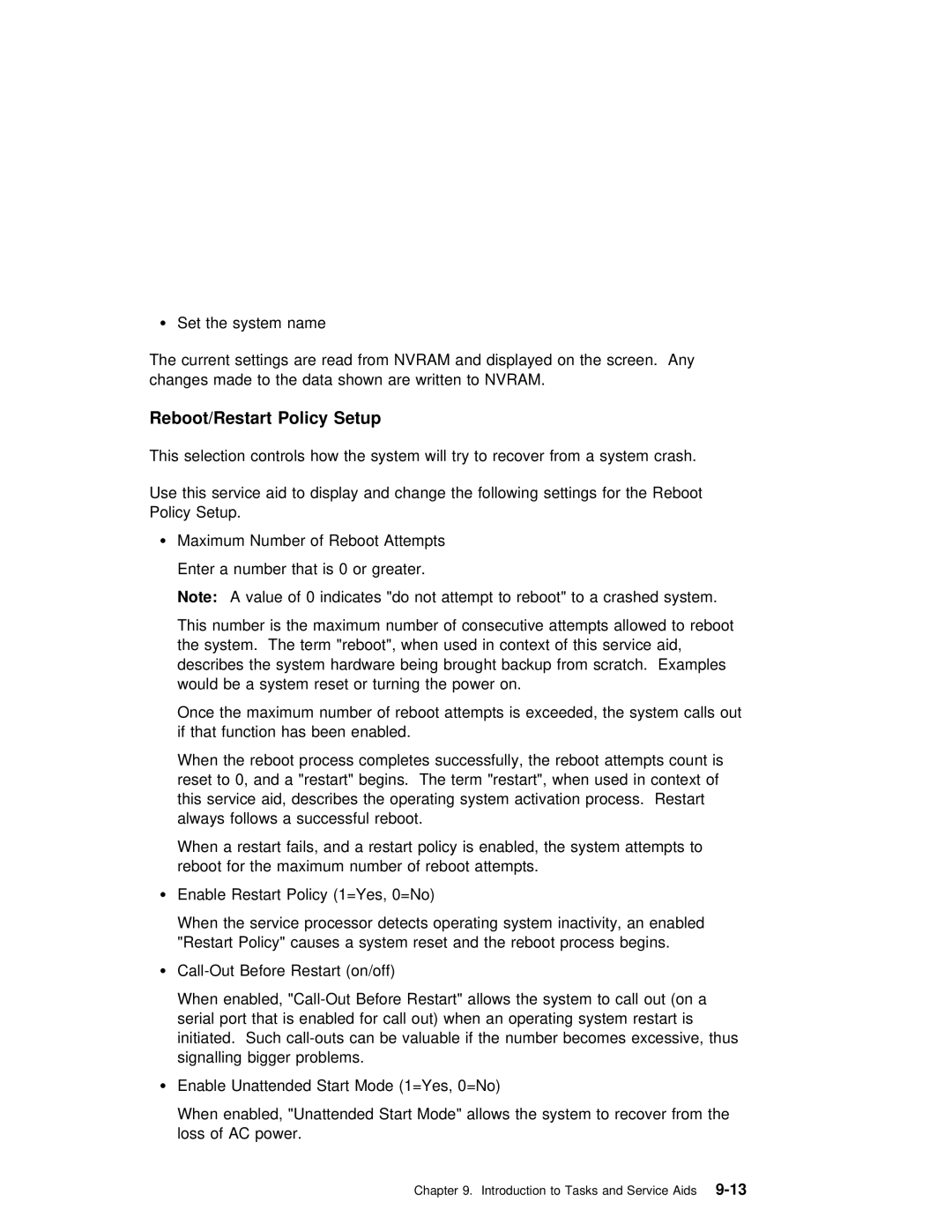ŸSet the system name
The current settings are read from NVRAM and displayed on the scr changes made to the data shown are written to NVRAM.
Reboot/Restart Policy Setup
This selection controls how the system will try to recover from a s
Use this service aid to display and change the following settings Policy Setup.
ŸMaximum Number of Reboot Attempts
Enter a number that is 0 or greater.
Note: A value of 0 indicates "do not attempt to reboot" to a c
This number is the maximum number of consecutive attempts allowed the system. The term "reboot", when used in context of this se
describes the system hardware being brought | backup from | scratc | ||||||
would be a system reset | or turning | the power | on. |
| ||||
Once | the | maximum | number | of | reboot attempts is | exceeded, | the s | |
if | that | function | has | been | enabled. |
|
|
|
When the reboot process completes successfully, the reboot atte reset to 0, and a "restart" begins. The term "restart", when us this service aid, describes the operating system activation pro always follows a successful reboot.
When a restart fails, and a restart policy is enabled, the sy reboot for the maximum number of reboot attempts.
ŸEnable Restart Policy (1=Yes, 0=No)
When the service processor detects operating system inactivity, "Restart Policy" causes a system reset and the reboot process
Ÿ
When enabled,
serial port that is enabled for call out) when an operating sys initiated. Such
ŸEnable Unattended Start Mode (1=Yes, 0=No)
When | enabled, "Unattended Start Mode" allows the system to recov |
loss | of AC power. |
Chapter 9. Introduction to Tasks and
